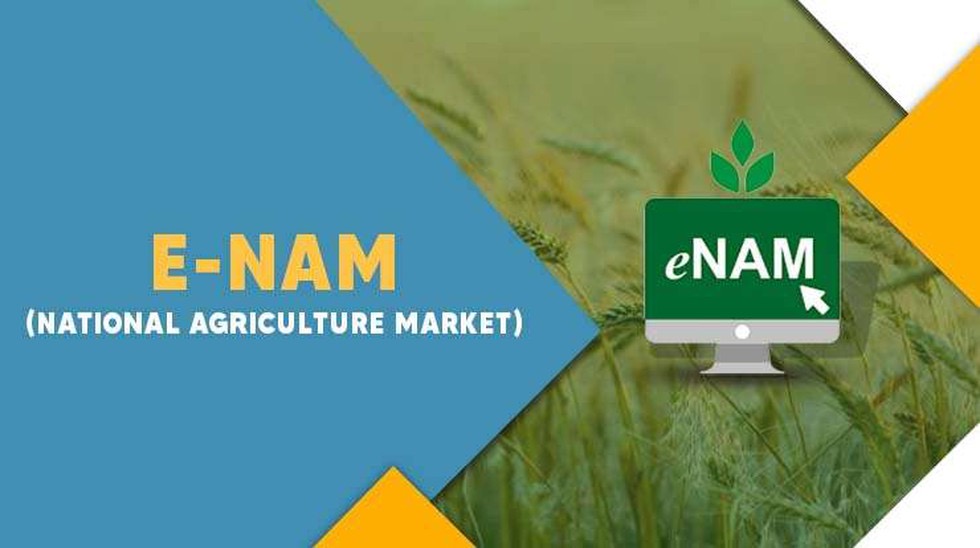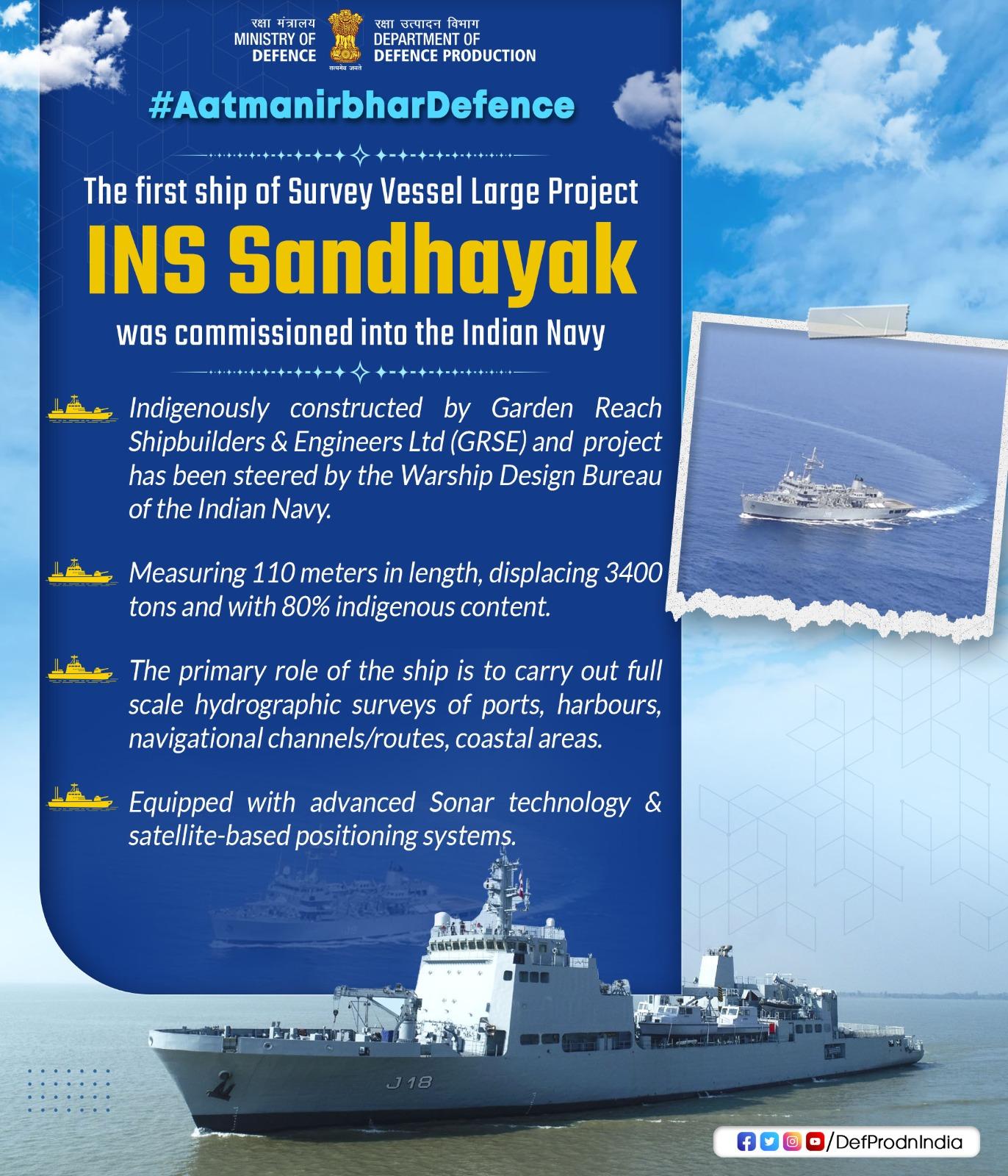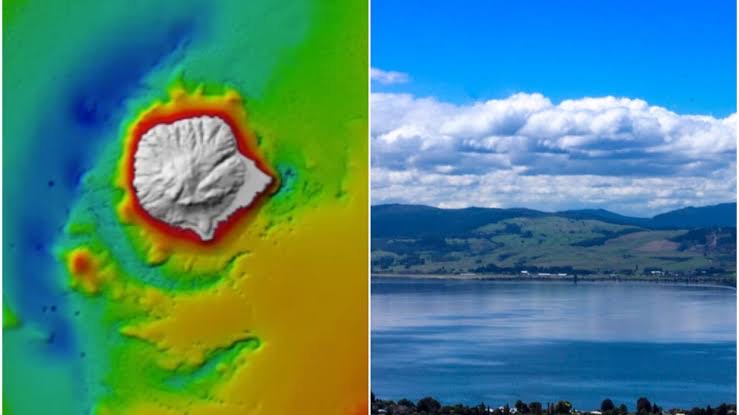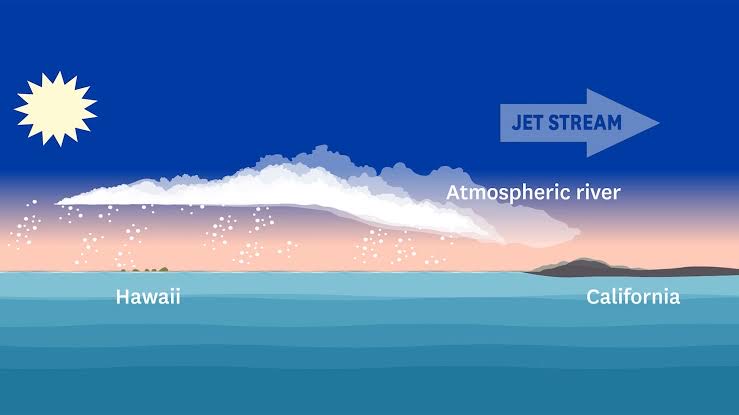National Agriculture Market or eNAM (Financial Express)

- 05 Feb 2024
Why is it in the News
With more states opening up or facilitating trade of agricultural commodities on the electronic -National Agriculture Market (eNAM), a spurt in trading among various markets within the state as well as at the inter-state level is being witnessed.
What is the National Agriculture Market (eNAM)?
- eNAM is an online trading platform dedicated to agricultural commodities in India.
- Launched on April 14, 2016, it is wholly funded by the Government of India.
- The Small Farmers Agribusiness Consortium (SFAC), operating under the Ministry of Agriculture and Farmers Welfare, takes the lead in implementing e-NAM
Objectives of eNAM:
- The primary goal is to enhance marketing opportunities for farmers by establishing a competitive and transparent price discovery system.
- It also facilitates online payment options for buyers, aiming to streamline the selling process for farmers.
Network and Structure:
- The NAM portal connects existing agricultural markets, including APMC/RMC market yards, sub-market yards, private markets, and unregulated markets.
- By creating a centralized online platform, e-NAM unifies agricultural markets nationwide for efficient commodity price discovery.
Key Features:
-
- Farmers can showcase products in nearby markets, allowing traders from any location to provide quotes.
- Single-window services encompass all APMC-related activities, including commodity details, buy-and-sell offers, and direct e-payment settlements to farmers' accounts.
- Facilitating Trade:
- eNAM allows traders, buyers, and commission agents to obtain licenses from state-level authorities without physical presence requirements.
- Quality standards and infrastructure for testing are harmonized in every market, including provision for Soil Testing Laboratories in selected mandis.
- Stakeholder Benefits:
- Designed for the collective benefit of farmers, mandis, traders, buyers, Farmer Producer Organizations (FPOs), and exporters.
- Stakeholder advantages include transparent online trading, real-time price discovery, reduced transaction costs, and availability of commodity prices on the e-NAM mobile app.
- Additional Benefits:
- Farmers receive details of commodity prices, quantity sold, and quality certification through SMS.
- The system promotes a more efficient supply chain and facilitates warehouse-based sales.
- Online payments are directly deposited into farmers' bank accounts, ensuring a seamless and secure financial transaction process.
INS Sandhayak - the Indian Navy’s First Survey Vessel Large (SVL) Ship (TOI)

- 05 Feb 2024
Why is it in the News
Defense minister Rajnath Singh commissioned survey vessel INS Sandhayak into the Indian Navy at the Naval Dockyard recently.
About INS Sandhayak:
- INS Sandhayak stands as the first unit in a series of four Survey Vessel (Large) ships under construction at Garden Reach Shipbuilders & Engineers (GRSE), Kolkata.
- Its primary mission is to conduct thorough coastal and deep-water Hydrographic Surveys, focusing on Port and Harbour approaches, navigational channels, and routes.
- The operational scope extends to maritime limits, encompassing the Exclusive Economic Zone (EEZ) and extended continental shelf.
Features:
-
- The vessel is equipped to gather oceanographic and geophysical data, serving the needs of both defense and civil applications.
- In a secondary role, it provides limited defense capabilities and can function as a hospital ship during wartime or emergencies.
- Cutting-Edge Technology:
-
- Equipped with advanced hydrographic tools, including a Data Acquisition and Processing System, Autonomous Underwater Vehicle, Remotely Operated Vehicle, DGPS Long-range positioning systems, and Digital side-scan sonar.
- Performance Specifications:
-
- Powered by two diesel engines, INS Sandhayak boasts a speed capability exceeding 18 knots.
- With a length of 110 meters and a displacement of 3400 tons, the vessel maintains an indigenous content exceeding 80 per cent by cost.
- Historical Continuity:
-
- This ship has been re-incarnated in its current form from the previous Sandhayak, decommissioned in 2021.
Hydrothermal System Beneath the Waters of Lake Rotorua in New Zealand's North Island (India Today)

- 05 Feb 2024
Why is it in the News
In a big revelation, scientists have unveiled a hidden hydrothermal system beneath the waters of Lake Rotorua, a site steeped in Maori legend and situated atop a dormant volcanic crater on New Zealand's North Island.
What are Hydrothermal Systems?
- Hydrothermal systems manifest in regions with intense heat, occurring both on continents near convergent plate boundaries and on the ocean floor in proximity to mid-ocean ridges.
- Three essential components—fluids, heat, and permeable rock structures—are crucial for their formation.
- Formation Dynamics:
- These systems are frequently situated near mid-ocean ridges, where tectonic plates diverge, leading to the creation of new seafloor.
- Operational Mechanism:
- Hydrothermal systems initiate as seawater infiltrates fractures in the oceanic crust, gaining heat from the Earth's interior as it descends.
- Interacting with the oceanic crust, the seawater, reaching temperatures of 350-400 degrees Celsius, undergoes chemical modifications, extracting elements from the rocks.
- Despite the extreme pressure at ocean depths preventing boiling, this process generates hydrothermal fluid—a mixture of gasses and dissolved elements, including metals.
- Return to the Seafloor:
- The superheated fluid is ejected back to the seafloor and rapidly cools upon contact with near-freezing ocean bottom waters.
- Chimney-Like Deposits:
- Chemicals dissolved in the fluid precipitate at the vent, creating chimney-like deposits.
- These formations support unique deep-sea chemosynthetic communities—organisms relying on chemicals, not photosynthesis, to sustain their metabolism.
Uniform Civil Code (Indian Express)

- 05 Feb 2024
Why is it in the News
The Uttarakhand Cabinet on Sunday approved the final draft of the Uniform Civil Code (UCC) without any changes, a day before the state Assembly convenes for a special session to take up the Bill.
What is Uniform Civil Code (UCC)?
- A Uniform Civil Code signifies a unified legal framework for the entire country, applicable across all religious communities concerning personal matters like marriage, divorce, inheritance, and adoption.
- The objective is to replace the current fragmented personal laws that govern interpersonal relationships within different religious communities.
Constitutional Framework:
- Article 44 of the Constitution mandates the State to strive for a Uniform Civil Code applicable to all citizens.
- Positioned in Part-IV as a Directive Principle, Article 44, while not justiciable, serves as a fundamental governance guideline.
- These principles, outlined in Article 37, provide overarching ideas for the State to consider in policy formulation and law enactment.
Current Landscape of Personal Laws:
- In the Concurrent list of the Constitution, matters such as marriage, divorce, and inheritance fall under both Parliament and state legislature jurisdictions.
- Hindu personal laws have been codified into four parts since 1956, while Muslim laws, not codified per se, draw from religious texts.
- Christians, Zoroastrians, and Jews are governed by their own personal laws. Goa stands as an exception, following the Portuguese Civil Code.
Need for Uniform Civil Code:
- A UCC aims to establish equal status for all citizens, addressing the inconsistency and lack of uniformity in personal laws across different religions.
- This inconsistency, conflicting with Article 14's Equality before the Law guarantee, often results in gender disparities.
Challenges and Criticisms:
- While advocating equality, the UCC concept raises concerns about potential clashes with the Right to Freedom of Religion (Article 25).
- Critics argue that separate personal laws uphold the right to practice one's religion, particularly crucial for minorities.
- Striking a balance, the Law Commission's 2018 report suggests preserving diversity in personal laws while ensuring alignment with fundamental rights.
The Way Forward:
- Encouraging a progressive mindset through education, awareness, and sensitization is vital for understanding the spirit of the UCC.
- Simultaneously, discriminatory personal laws should be amended or abolished.
- The Law Commission recommends codifying different personal laws to derive universal principles prioritizing equity, rather than imposing a blanket Uniform Civil Code
“Pineapple Express” Sweeps California, Atmospheric River Leaves State In Distress (India Today)

- 05 Feb 2024
Why is it in the News?
A strong and grievous atmospheric river storm is predicted to hit California during the later part of Saturday, leaving over another storm, which resulted in extreme flooding in the last week.
What is an Atmospheric River?
- Atmospheric rivers are long and relatively narrow bands of water vapor that form over an ocean and flow through the sky, transporting much of the moisture from the tropics to northern latitudes.
- They occur globally but are especially significant on the West Coast of the United States, where they create 30% to 50% of annual precipitation and are vital to water supplies but also can cause storms that produce flooding and mudslides.
- While they are an incredibly important source of rainfall, they can also bring flash flooding, mudslides, and landslides, sometimes killing people and destroying property.
- Formation: Formed by winds associated with cyclones, atmospheric rivers typically range from 250 miles to 375 miles (400 to 600 kilometers) in width and move under the influence of other weather.
- Many atmospheric river events are weak. But the powerful ones can transport extraordinary amounts of moisture.
- Studies have shown that they can carry seven to 15 times the average amount of water discharged daily by the Mississippi River.
- Forty-six atmospheric rivers made landfall in the U.S. West Coast during the water year 2023.
- Nine were categorized as strong, two were extreme and one was exceptional.
- California experienced extensive flooding and massive snowfall.
What Happens When an Atmospheric River Reaches Land?
- When the moisture-laden air moves over mountain ranges such as the Sierra Nevada along the California-Nevada line, the water vapor rises and cools, becoming heavy precipitation that falls as rain or snow.
- While traditional cold winter storms out of the north Pacific build the Sierra snowpack, atmospheric rivers tend to be warm.
- Snow may still fall at the highest elevations but rain usually falls on the snowpack at lower elevations.
- That can quickly prompt melting, runoff and flooding and decrease the snowpack needed for California’s water supply.
What is a Pineapple Express?
- It is a nickname for a strong atmospheric river in the tropical Pacific near Hawaii.
Where did the Term Atmospheric River Come From?
- The name came from research published in the 1990s by scientists Yong Zhu and Reginald E. Newell of the Massachusetts Institute of Technology.
